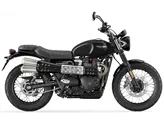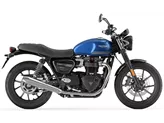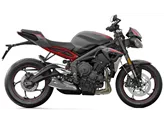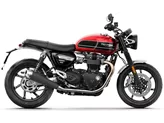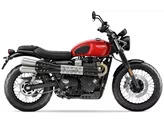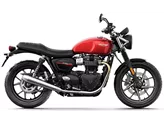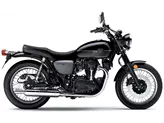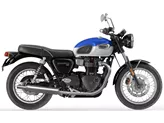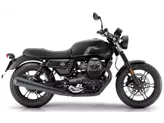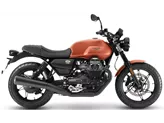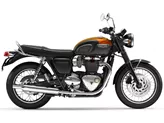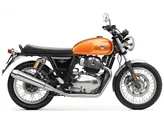Triumph Street Triple 675 R 2013 vs. Triumph Street Twin 2016

Triumph Street Triple 675 R 2013

Triumph Street Twin 2016
Overview - Triumph Street Triple 675 R 2013 vs Triumph Street Twin 2016
The Triumph Street Triple 675 R model year 2013 and the Triumph Street Twin model year 2016 are both naked bikes manufactured by Triumph. While they have some similarities, they also have several differences in terms of their technical specifications and performance.
Starting with the Triumph Street Triple 675 R 2013, it is equipped with an in-line, liquid-cooled engine with a displacement of 675cc. It delivers a power output of 106 HP and a torque of 68 Nm. The bike features a three-cylinder engine configuration, which provides a smooth and powerful performance. The engine is mated to a twin-tube frame type, ensuring stability and control. The suspension system consists of an upside-down telescopic fork at the front and a Kayaba brand suspension at the rear, which can be adjusted for compression and rebound. The braking system includes four-piston Nissin calipers at the front, providing strong and reliable stopping power. The bike has a wheelbase of 1410 mm and a seat height of 800 mm, offering a comfortable riding position. It also has a fuel tank capacity of 17.4 liters, allowing for longer rides without frequent refueling.

Triumph Street Triple 675 R 2013
On the other hand, the Triumph Street Twin 2016 is equipped with an in-line crankpin offset engine with a displacement of 900cc. It delivers a power output of 55 HP and a torque of 80 Nm. The bike features a two-cylinder engine configuration, which provides a different riding experience compared to the Street Triple 675 R. The engine is also liquid-cooled for optimal performance. The bike is built on a central tube frame type, which offers a balance between rigidity and flexibility. The suspension system consists of a telescopic fork at the front and a Kayaba brand suspension at the rear, which can be adjusted for preload. The braking system includes double-piston Nissin calipers at the front, ensuring reliable braking performance. The bike has a wheelbase of 1415 mm and a seat height of 750 mm, offering a slightly lower riding position compared to the Street Triple 675 R. It has a fuel tank capacity of 12 liters, which is slightly smaller than the Street Triple 675 R, but still sufficient for most riding scenarios.
In terms of strengths, the Triumph Street Triple 675 R 2013 is known for its taut and playful chassis, providing an agile and responsive riding experience. The bike has a low weight, contributing to its nimble handling. The powerful brakes offer excellent stopping power, ensuring safety on the road. Additionally, the bike offers a comfortable riding position, allowing for longer rides without discomfort.
On the other hand, the Triumph Street Twin 2016 has an excellently tuned engine, delivering high torque for a thrilling riding experience. The bike also has a low fuel consumption, making it more economical to ride. The authentic design of the Street Twin adds to its appeal, and it is known for its good quality and clean workmanship.
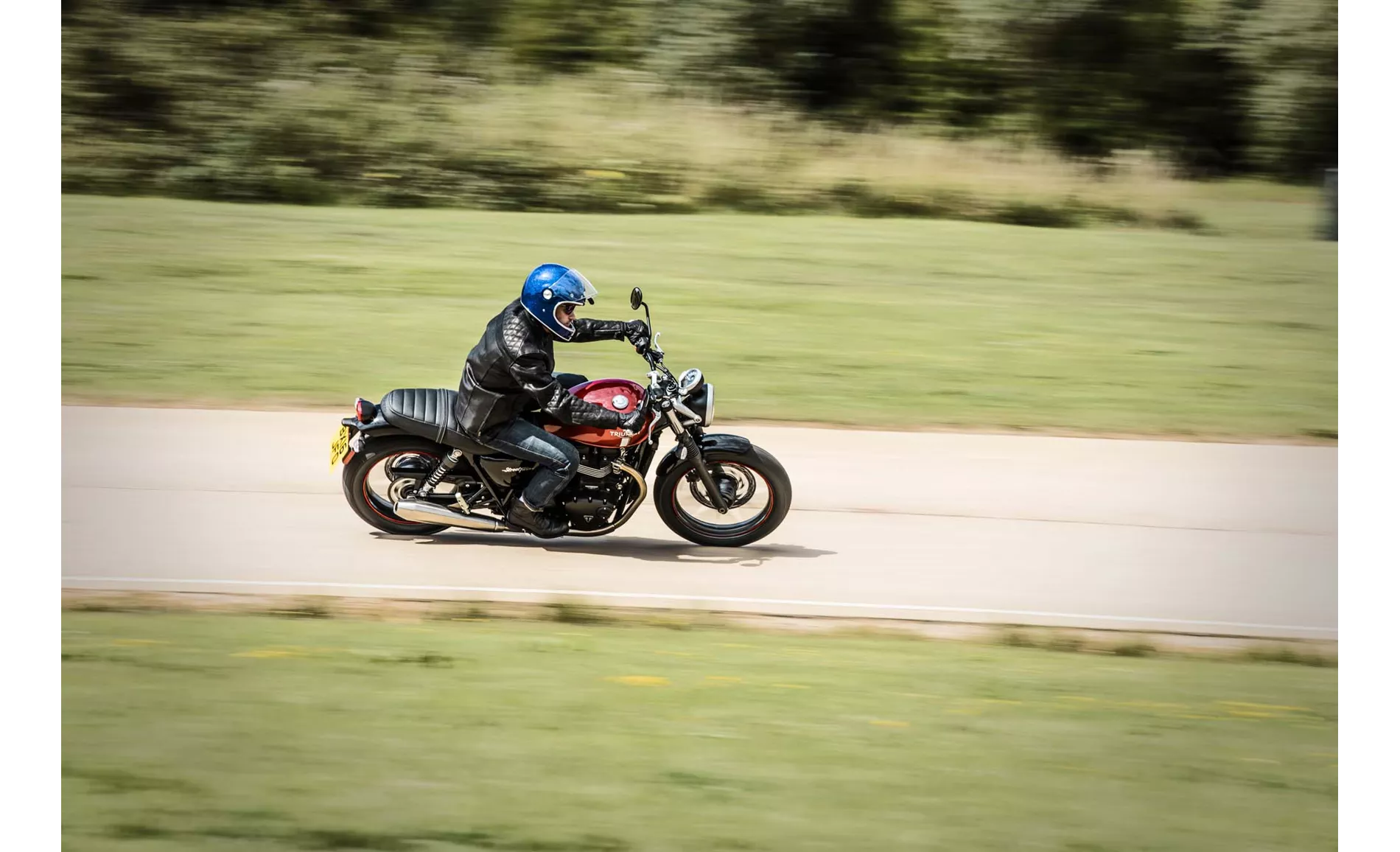
Triumph Street Twin 2016
However, both bikes have their weaknesses as well. The Triumph Street Triple 675 R 2013 has been criticized for its brake application, which can be a little brute towards the end. On the other hand, the Triumph Street Twin 2016 has been noted to have a somewhat sober basic shape without accessories. Additionally, the chassis and brakes of the Street Twin may reach their limits in sporty use, limiting its performance in aggressive riding scenarios.
In conclusion, the Triumph Street Triple 675 R 2013 and the Triumph Street Twin 2016 are both impressive naked bikes with their own unique features and strengths. The Street Triple 675 R offers a powerful and agile riding experience, while the Street Twin focuses on delivering an excellently tuned engine and a more economical ride. Riders should consider their preferences and riding style to choose the bike that best suits their needs.
Technical Specifications Triumph Street Triple 675 R 2013 compared to Triumph Street Twin 2016
Pros and Cons in comparison
Pros and Cons in comparison
Triumph Street Triple 675 R 2013

If you're looking for a lively naked bike in the mid-range segment that's especially fun for sporty rides on country roads, the Street Triple 675 R is the perfect choice. Whether the manageable surcharge for the R pays off should be decided according to whether you really want to adjust the chassis or leave it in the well-chosen basic setup anyway.
Triumph Street Twin 2016

The Triumph Street Twin is a pleasure bike par excellence, whose 55 hp engine impressively proves what really matters, namely torque. And exactly where you need it, in the middle of the rev range. 80 Nm push the 217 kg motorbike forward with pleasant pressure and never tempt the rider to overtax the engine, i.e. to rev it. In terms of design, Triumph remained authentic as usual and offers countless possibilities for customisation with over 450 accessories and the three "Inspiration Packs". A lesson in modern classics.
Price Comparison Avarage Market Price Triumph Street Triple 675 R vs Triumph Street Twin
There are a few key differences between a Triumph Street Triple 675 R 2013 and a Triumph Street Twin 2016. It takes less time to sell a Triumph Street Triple 675 R with 52 days compared to 61 days for a Triumph Street Twin. Since model year 2009 1000PS.de editors have written 16 reviews for the Triumph Street Triple 675 R and 11 reviews for the Triumph Street Twin since model year 2016. The first review for the Triumph Street Triple 675 R was published on 7/20/2008 and now has more than 13,000 views. This compares to more than 45,200 views for the first review on Triumph Street Twin published on 12/11/2015.


